Contact centres are littered with distinct vocabulary, abbreviations, and acronyms, such as BPO, POC and CLI.
Need to look up the meaning or full form of some BPO Jargon? We have compiled a glossary of all the key call centre terminologies, with an explanation for each term and buzzword.

Abandoned Call
An Abandoned Call occurs when a caller hangs up before their call is answered by an agent. This is also known as a “Lost Call.”
Abandoned Call Rate (ACR)
Abandoned call rate (ACR) is a key performance metric used in call centres and customer service environments to measure the percentage of incoming calls that are disconnected by the caller before being answered by a representative.
This metric helps assess customer frustration and satisfaction, as a high abandoned call rate often indicates long wait times or inefficiencies in call handling.
ABC Approach (Always Be Closing)
ABC, or Always Be Closing, is a motivational phrase popularized by Alec Baldwin’s character Blake in the film Glengarry Glen Ross. It emphasizes the importance of consistently working towards closing sales.
Account Code
An Account Code is a series of characters used to identify a client, which might be an individual customer or a corporate entity.
Companies often have an in-house way of referring to account codes, such as ‘account number’ or ‘Customer Reference Number’ (CRN).
Activity Codes
Refer to Wrap-Up Codes for information on Activity Codes.
Adherence or Adherence to Schedule
Adherence refers to how well Agents Adhere to their Schedules. It includes:
- Availability: Time spent ready to take calls, including time handling calls and waiting for them.
- Compliance or Adherence: When they were available to take calls. See Real-Time Adherence Software and Occupancy.
After-Call Survey
An After-Call Survey is a feedback request made following a customer call, with the goal of uncovering success or flaws in the call touchpoint experience.
After-Call Work (ACW)
ACW or After-Call Work, also known as wrap-up or post-call processing (PCP), is the period of time immediately after contact with the customer is completed when any supplementary work is undertaken by the agent.
Awaiting Further Instruction (AFI)
Awaiting Further Instruction (AFI) is typically a wrap up code waiting for additional information or actions from the customer before proceeding.
Agent
An Agent is a person who handles customer calls, emails, or other forms of communication. They are also known as customer advisors or customer representatives.
Agent Group
Agent Group can also be called Split, Gate, Queue or Skills Group. A collection of agents that share a common set of skills, such as being able to handle customer complaints.
Agent Occupancy
Agent Occupancy is the period of logged-in time agents spend on call-related activity.
Agent Out Call
Agent Out Call refers to a phone call made by a call centre agent to a customer or client, rather than receiving a call from them. This type of call is typically initiated for purposes like follow-ups, sales, or customer support.
Agent Ramp-Up Time (Ramping)
Agent Ramp-Up Time (also known as ramping) refers to the time taken by an agent to reach minimum levels of efficiency.
During this period, the agent typically undergoes training, shadowing, and practice to develop the skills needed to handle customer interactions effectively.
Ramp-up time includes activities such as learning the call scripts, understanding the company’s policies, and gaining proficiency in using the tools and technologies involved in their role.
Agent Status
Agent Status refers to the current state or activity of a call centre agent, such as whether they are available to take calls, on a call, or away from their desk. It helps manage and track the agent’s workload and availability.
Agent Status Codes
Also known as ‘reason’ or ‘activity’ codes, Agent Status Codes enable agents to signal their availability for calls to the ACD.
AI Microlearning
AI Microlearning is the ability to create microlearning content in just a few seconds by using the power of generative AI.
All Hands on Deck (AHOD)
AHOD stands for All Hands on Deck, and refers to the situation that exists when a contact centre gets super-busy, customer wait times go up and service levels start to drop. Typically during AHOD, training gets cancelled, all team leaders and managers start taking calls and overtime is offered to help clear the backlog.
All Trunks Busy (ATB)
When All Trunks are Busy in a specified trunk group. Generally, reports indicate how many times all trunks were busy, and how much total time all trunks were busy.
What they don’t reveal is how many callers got busy signals when all trunks were busy.
Analogue
Telephone transmission or switching that is not digital. Signals are analogous to the original signal.
Announcement
An Announcement is a pre-recorded verbal message played to callers.
Answer Supervision
Answer Supervision is a signal sent by the ACD or other device to the local or long-distance carrier to accept a call. That is when billing for either the caller or the call centre will begin if long-distance charges apply.
Answered Call
An Answered Call is a call that has reached an agent within a specific agent group.
Application-Based Routing and Reporting
Application-Based Routing and Reporting is an ACD feature that routes and tracks calls based on the type of call or application, rather than by trunk group or agent group.
Architecture
Architecture refers to the design of a system, including how its components work together, its capacity, and its ability to integrate with other systems.
Artificial Intelligence (AI)
Artificial Intelligence (AI), Otherwise known as “machine intelligence”, refers to machines simulating or bettering human intelligence.
Asynchronous Messaging
Asynchronous Messaging involves the integration of messaging apps like WhatsApp, WeChat and Messenger with automation, so advisors can respond to customers in exactly the same way, no matter which app they choose.
Attrition
Attrition is the rate at which members of staff voluntarily leave the workforce over a given period of time. It is also known as ‘staff turnover’, or ‘staff churn’, although in the contact centre industry ‘churn’ tends to refer to the flow of customers rather than staff.
Auto Attendant (AA)
An Auto Attendant (AA) is a system that routes calls based on choices selected by the caller from a menu. The options an AA presents are connected to keys on the customer’s DTMF phone; the system understands the customer’s choice by ‘listening’ to the tone of the key press.
Auto Available
Auto Available is an ACD feature that automatically sets agents to Available mode after they finish a call. Agents must manually switch to After-Call Work if needed.
Auto Greeting
An Auto Greeting is a pre-recorded message that automatically plays when a call is received by an agent.
Automatic Call Distribution (ACD)
Automatic Call Distribution (ACD) is a system that automatically directs incoming phone calls to the appropriate agent or department based on factors like the caller’s needs or the agent’s skills. It helps manage call flow and improve efficiency in handling customer inquiries.
Automated Speech Recognition (ASR)
Automated Speech Recognition (ASR) is a solution to automate some or all parts of a customer call. It allows the caller to interact with your call centre using their natural language, without the involvement of an agent.
Speech recognition can be applied to some or even all parts of a call, particularly where the information that you collect is in a standard form.
Automatic Call Distributor (ACD)
An Automatic Call Distributor (ACD) system is a telephony or communications device that answers and distributes incoming contacts to a specific group of contact centre advisors within an organization.
Automatic Number Identification (ANI)
Automatic Number Identification (ANI) captures the caller’s phone number. In the UK, it is known as Calling Line Identity (CLI).
Auto Wrap-Up
Auto Wrap-Up is a feature in call centres that automatically adds a summary or notes to a call record after the call ends. It helps agents quickly document the call details without manual input, saving time and ensuring accurate records.
Auxiliary Work State
An Auxiliary Work State is one type of ‘unavailable’ state. While an agent is in an auxiliary state, the ACD will not route calls to them.
Agents enter an auxiliary work state when they are present and working but not involved in call-related activity.
Availability
See Adherence to Schedule for details on agent availability.
Available State
An Available State is when an agent is logged into the ACD and ready to take incoming calls.
Available Time
Available Time, also known as idle time, is time spent by agents ready and waiting to take calls. If an agent is logged into the ACD and is not engaged in another task like talking to a customer or in after-call wrap (ACW), they are available.
Average Delay
See Average Speed of Answer for details
Average Delay of Delayed Calls
The average delay of calls that are delayed. It is the total Delay for all calls divided by the number of calls that had to wait in queue. See Average Speed of Answer.
Average Handling Time (AHT)
Average Handling Time (AHT) is the amount of time it takes an agent to deal with all aspects of a call – it includes talk time plus After-Call Work (ACW).
Average Holding Time on Trunks
Average Holding Time on Trunks is the average time that inbound calls occupy phone lines (trunks). It is calculated as (Talk Time + Delay Time) / Calls Received.
Average Number of Agents
The Average Number of Agents logged into a group for a specified time period.
Average Resolution Time (ART)
Average Resolution Time (ART) or Time to Resolution or Mean Time To Resolution (MTTR) is the average time call centre agents take to solve opened tickets in a specified period.
Average Speed of Answer (ASA)
Average Speed of Answer (ASA) is a metric calculating the amount of time it takes to answer a typical call once it has been routed to the contact centre. It is often used with the metric of Average Wait Time (AWT), the period of time before being connected to an advisor.
Average Talk Time (ATT)
Average Talk Time (ATT) is, quite simply, the amount of time you spend talking, chatting or working with a customer.
Average Time to Abandon (ATA)
Average Time to Abandon (ATA) is also known as the Average Patience of the caller.
This is the average length of time that a caller will stay in a queue before they abandon (or hang up the call).
While a significant number of people will stay on the line for very long periods of time, others will simply hang up. Some will redial, but many will not.
Average Time to Abandonment
Average Time to Abandonment is the average time callers wait in a queue before abandoning the call, considering only abandoned calls.
Awaiting Further Instructions (AFI)
Awaiting Further Instructions (AFI) refers to the status of a customer query in a support centre when it cannot proceed until additional instructions are provided by the customer.

Back-Office Optimisation (BOO)
Being able to shift resources from the contact centre to the back office during the low-contact-volume parts of the day, and shifting resources from the back office to the contact centre during contact volume peaks, makes sense and should provide an increased efficiency.
Balanced Scorecard
Balanced Scorecard in a scorecard that shows a range of measures – typically based around graphs or traffic lights – on a single sheet of paper about how a call centre is performing.
Base Staff
Base Staff, also called Seated Agents, refers to the minimum number of agents required to meet service level and response time targets for a specific period.
Seated agent calculations assume that agents will be in their seats for the entire period. Therefore, schedules need to add in extra people to accommodate breaks, absenteeism and other factors that will keep agents from the phones. See Rostered Staff Factor.
Basic Rate Interface (BRI)
Basic Rate Interface (BRI) is one of two basic levels of ISDN service. A BRI line provides two bearer channels for voice and data and one channel for signalling (commonly expressed as 2B+D). See Primary Rate Interface (PRI) and Integrated Services Digital Network.
Beep Tone
A Beep Tone is an audible notification that a call has arrived (also called “Zip Tone”). Beep tone can also refer to the audible notification that a call is being monitored.
Benchmark
Benchmarking is the process of comparing an organization’s products, services, and processes against those of other organizations to identify best practices and improvement opportunities. Historically, it referred to standardized tasks used to evaluate the performance of devices.
Best in Class
Best in Class is a benchmarking term to identify organisations that outperform all others in a specified category.
Blended Agent
Blended Agents are trained to handle both incoming and outgoing calls. This generally involves the ACD identifying a rise in incoming call volume and switching outbound agents’ duties to handle the overflow. Alternatively, inbound agents can be assigned to outbound calls when incoming volume is low.
Blended AI
Blended AI refers to the combination of both human intelligence and Artificial Intelligence to help better the customer experience.
Blockage
In simple term, Blockage is when callers are blocked from entering a queue.
Blocked Call
A Blocked Call is one that cannot be connected immediately because A) no circuit is available at the time the call arrives, or B) the ACD is programmed to block calls from entering the queue when the queue backs up beyond a defined threshold.
Bluetooth
Bluetooth is a low-energy data-transfer technology which replaces conventional wires with short-range radio signals. It is the technology that fuels the ‘hands-free’ function.
Brand Experience
Brand Experience represents the overall perception an individual has of your brand based on all the interactions and experiences they have had with your business across channels and at various touchpoints.
Brand Intelligence
Brand Intelligence is the collection and analysis of data related to customer sentiment and customer emotion about the brand.
BTWN (Abbreviation of Between)
In after-call work, customer service agents often use “BTWN” (short for “between”) in their notes or documentation to specify time ranges or details related to the call.
This shorthand helps agents efficiently record and communicate time-sensitive information or actions required. For Example, “CUST (customer) prefers a follow-up call BTWN 2 PM and 4 PM.”
Business As Usual (BAU)
Business As Usual (BAU) means the normal state of operations for the contact centre. It is the opposite of AHOD, which stands for All Hands on Deck.
Business Networking
Business Networking means connecting with other professionals for mutual benefit. This is usually undertaken to meet service providers, generate leads and keep abreast of industry best practice.
Business Process Outsourcing (BPO)
Business Process Outsourcing (BPO) refers to the practice of hiring an external company (usually India and other lower-cost countries) to handle specific business tasks or processes, such as customer service, IT support, or payroll.
This allows businesses to focus on their core activities while benefiting from the expertise and efficiency of specialized service providers
Business to Business (B2B)
Business to Business (B2B) is a business model where transactions are carried out between corporate entities rather than a company and an individual consumer.
Business to Consumer (B2C)
The Business to Consumer (B2C) model involves companies making sales directly to individual consumers rather than to other commercial enterprises.
Busy Hour
A telephone traffic engineering term, referring to the hour in which a trunk group carries the most traffic during the day. The average busy hour reflects the average over a number of days such as two weeks.
Busy Hour has little use for incoming call centres, which require more specific resource calculation methodologies.
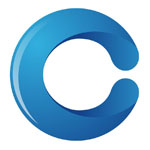
Call Analytics
Call Analytics is a technology solution that evaluates and analyzes customer conversations that take place via phone. It provides insights into customer behavior, agent performance, and overall call effectiveness.
Call Avoidance
Call Avoidance is a proactive strategy to reduce the number of unwanted or low-value calls – for example, failure avoidance by eliminating repeat calls; or call automation through self-service.
Call Blending
Call Blending is a technique to mix inbound and outbound calls for specific agents.
Smooths out the peak demand for inbound call patterns by feeding outbound calls of a similar call type to agents during quiet periods.
Call Calibration
Contact centres often run Call Calibration Sessions with their quality analysts and team leaders to ensure that everyone is assessing customer contacts in the same way.
By doing so, the contact centre can help to ensure advisors that their performance is being scored fairly, while changing any subjective criteria from the quality scorecard.
Call Centre
A Call Centre is an office used by a company to make or receive customer phone calls. These offices are staffed by large teams of agents that provide assistance on customer orders and returns, general questions, service requests, and similar issues.
Call Centre Audit
A Call Centre Audit is a way to measure your overall performance and determine whether or not your call centre is performing to the best of its ability.
Call Centre Manager
The Call Centre Manager is the person responsible for the management of the budget, operation and business performance of the call centre.
Call Centre Scorecard
A Call Centre Scorecard is a tool used to track and measure the performance of a call centre. It includes key metrics like call handling time, customer satisfaction, and call resolution rates.
The scorecard helps managers see how well the call centre is performing and identify areas for improvement.
Call Control Variables
Call Control Variables are criteria used by an Automatic Call Distributor (ACD) to process calls. These include routing criteria, overflow parameters, recorded announcements, and timing thresholds.
Call Detail Recording
Call Detail Recording captures and stores data on each call handled by the ACD. This data can include the trunk used, time in queue, call duration, the agent who handled the call, and the number dialed for outgoing calls.
Call Disposition codes
Call disposition codes (also known as wrap-up codes) are used by contact centres to label and classify calls as they come in, based on the reason why the customer is calling.
Call Drivers
A Call Driver is the reason that someone had called into the contact centre.
Contact centres often measure and analyse their most common call drivers, in order to lower call volumes.
Call Forcing
Call Forcing is an ACD feature that automatically delivers calls to available agents. Agents receive a notification, such as a beep, indicating that a call has arrived, without needing to press a button to answer.
Call Handling Analysis
Call handling analysis is an approach to monitor the effectiveness and quality of the handling of calls by the agents.
Call Recording
A solution to implement an effective call handling quality process. Can involve the recording and storage of calls and data relating to financial or legal transactions. See the Call Recording and Speech Analytics Reference Guide
Call Recording involves capturing and storing phone calls and related data. This practice is essential for quality assurance, compliance with legal and financial regulations, and training purposes.
Call Riding
Call Riding is a term that means instead of simply transferring a call in a contact centre – to a supervisor, or another advisor, for example – the advisor (or agent) conferences in the other employee and stays on the call listening to both the other employee and the customer.
Call Routing
Call Routing is the process whereby incoming calls are routed to certain advisors in a process that is based on pre-established criteria.
Caller ID
See Automatic Number Identification.
Calling Line Identity (CLI or CLID)
These days the telephone number of the caller travels ahead of most calls. This is known as Calling Line Identity (CLI) or by BT as Caller ID.
You will probably most often see this when someone calls your mobile phone. This is also known in the USA as Automatic Number Identification or ANI.
This number can be used by CTI software to match up to a computer record for that caller.
Calls In Queue
Calls In Queue is a real-time report showing the number of calls received by the ACD system that have not yet been connected to an agent. This metric helps manage and monitor call wait times.
Capacity Planning
Capacity Planning is the process of determining the resources required to handle customer interactions effectively.
It involves forecasting call volumes, staffing needs (including the right mix of employees, taking into account their skills, capabilities, and preferences), and the necessary infrastructure, to handle customer demand.
Carrier
A ‘Carrier’ is a telecommunications service provider (TSP) that enables the public to connect to the public switched telephone network (PSTN) or mobile networks. Examples of carriers include BT, AT&T, Sprint, T Mobile and Vodafone.
Central Office (CO)
A Central Office (CO) is either a telephone company switching centre or the type of switch used in such a centre. It handles calls from within the local area, routing them locally or passing them to an inter-exchange carrier (IXC).
Channel Agnostic
Channel Agnostic refers to providing a centralized process or interaction route that works irrespective of the interaction channel used by the customer.
Chatbots
A Chatbot is a computer program that you can use to communicate with customers or site visitors when a human agent is not available. It can use voice communication, but more often uses text chats (or it may use a combination of the two).
Chat GPT
ChatGPT is a powerful AI model designed to understand and generate human-like text based on the information it’s given by a user.
Chief Information Officer (CIO)
The Chief Information Officer (CIO) is the highest-ranking executive responsible for an organization’s information systems, overseeing IT strategy, infrastructure, and operations.
Chief Technology Officer (CTO)
CTO stands for Chief Technology Officer. This person is in charge of developing and delivering an organization’s strategy for best utilizing technology.
Churn Rate
Churn rate refers to the percentage of customers who end their relationship with a business within a given period.
Closed-Loop Feedback
Closed-Loop Feedback consists of gathering feedback, taking action and following up. Through this process, employees and customers get the sense that their voice is being heard and is valued by the organization.
Cloud Computing
Cloud Computing means using the internet to access and manage computer services like storage, applications, and processing power, rather than relying on local servers or personal computers. It allows you to use and store data online, making it accessible from anywhere.
Cloud Contact Centre
Cloud Contact Centres are an evolution of the on-site call centre system to a cloud-based system. The on-site call-processing software has become an instantly available infrastructure to provide the services without maintaining software on computers.
Cloud Solutions
Cloud Solutions allow users to access IT services like software, applications, storage, and more over the internet rather than using a local server. Essentially, it’s the IT equivalent of renting instead of buying.
Coach
The person who provides additional support and technical knowledge to agents (in addition to the Team Leader). Also known as a buddy.
Cold Call
Cold Calls are unsolicited calls placed by contact centres to prospective customers, usually with the intention of making a sale or introducing a product. Outside the contact centre industry, cold calling can also refer to unsolicited home visits.
Compliance
Compliance is the ability to adhere to an order or a set of rules. These rules may be internal to the company or external to it, set by a regulatory body. Compliance is not just the law; compliance standards are regulated by the legislation of that particular country.
Computer Simulation
Computer Simulation is a technique used to predict outcomes of various events based on numerous variables. It is often employed when there are many variables to provide reasonable forecasts.
Computer Telephony Integration (CTI)
Computer Telephony Integration (CTI) is a method of connecting your telephone system to your database. Most commonly this will allow you to pop the caller’s details up on to the agent’s screen when the call connects (Screen Pop).
CTI can also be used for a variety of applications such as call routing.
Despite huge business advantages, it often requires quite complex integration and its deployment has been limited.
Conditional Routing
Conditional Routing allows an Automatic call distributor (ACD) to route calls intelligently by factoring in contextual and performance information. It does this through a series of if/then scenarios, where each condition has a predetermined treatment.
Contact Centre
A Contact Centre handles all forms of communication, not only voice calls but email, letters, social media, and instant messaging.
Contact Centre as a Service (CCaaS)
Contact Centre as a Service (CCaaS) is a cloud-based deployment model for buying contact centre technology.
Contact Centre Gamification
Contact Centre Gamification is defined as the use of game mechanics – such as earning rewards or advancing through levels – applied to a contact centre environment.
Contact Centre Management
Contact Centre Management is the way a business manages the daily operations of its contact centre workforce and contact centre software to deliver consistent and delightful customer experiences across a variety of channels.
A company’s everyday operations and software are managed through contact centre management to provide dependable and satisfying client experiences across various channels.
Contact Centre Quality Assurance (QA)
Contact Centre Quality Assurance (QA) is a business process that ensures products and services meet an internally agreed standard.
In the contact centre, QA usually refers to monitoring agents’ interactions with customers, making sure processes are followed and seeking improvements.
Conversation Tagging
Conversation Tagging is the process of assigning meaningful labels to your customer chat conversations. Meaningful labels refer to labels that specifically describe what the chat conversation is about – in essence, a brief one- or two-word summary.
Conversation Intelligence (CI)
Conversation Intelligence (CI) uses artificial intelligence and machine learning to analyse every customer interaction, the emotions behind it, and how they influence customers’ behaviour.
Conversational AI
Conversational AI refers to technologies that can understand both speech and text inputs and correctly respond in a natural, human-like manner.
Conversational Analytics
Conversation Analytics provides organizations with insights based on the interactions with customers across all channels to provide a more comprehensive, and more coherent, sense of the quality and consistency of those interactions.
Conversational Commerce
Conversational Commerce is any way that artificial intelligence (AI) can generate revenue for a company.
Examples of conversational commerce include live chat, a voice bot, or virtual assistant that connects to customers through SMS or other messaging platforms.
Corporate Ethics
Corporate Ethics refers to a set of beliefs and values that govern how a business operates – a code of conduct for both an organization and its employees.
Corporate Social Responsibility (CSR)
Corporate Social Responsibility (CSR) refers to a company’s ethical practices, such as environmental sustainability and community engagement. It reflects the company’s commitment to social and environmental responsibility.
Cost Per Acquisition (CPA)
Cost Per Acquisition (CPA) is the cost to acquire a new customer.
Cost Per Call
Cost Per Call is the average amount of money spent on handling each phone call in a call centre. It includes expenses like staffing, technology, and other related costs, and helps measure the efficiency of call handling.
Courtesy Calls
Courtesy Calls can provide you with an opportunity to nurture relationships, show appreciation, and provide exceptional customer service.
Critical Work Day (CWD)
A Critical Work Day (CWD) is a designated day in which maximum staffing is essential to meet heightened operational demands.
In a BPO environment, CWD means that vacation or holiday requests are restricted or denied during these periods to ensure that sufficient personnel are available to handle increased workloads, such as during peak business times, product launches, promotional campaigns, or other high-demand scenarios. Ensuring maximum staffing during a CWD helps maintain service levels
Cross Talk
Crosstalk refers to periods on a call recording when both the Customer and The Advisor are speaking at the same time. Useful for spotting when the Agent is talking over the Customer.
Customer Centricity
Customer Centricity is defined as putting a customer’s interests truly at the heart of every business strategy, decision, and project, making it the most important factor in every interaction and design decision.
Customer Data Analysis
Customer Data Analysis is the process of mining the raw data gathered for insights. These insights will be relevant to your organization’s key goals.
Customer Data Management
Customer Data Management is the process where businesses gather, store, update, access, and – most importantly for personalization – analyse information from their customers.
Customer Data Platform (CDP)
CDP stands for customer data platform.
This differs from a CRM system as, in layperson’s terms, a CDP platform manages your customer data, whereas a CRM system manages your customer relationships.
Customer Dissatisfaction (DSAT)
Customer Dissatisfaction (DSAT) is the opposite to CSAT, it measures how unhappy customers are with a service or product. It typically comes from feedback or surveys where customers rate their experience negatively.
Customer Experience (CX)
Customer Experience (CX) is the result of all the interactions a customer has with a brand during that customer’s journey.
Customer Experience Management (CEM)
Customer Experience Management (CEM) involves designing and responding to customer interactions to meet or exceed expectations, thereby increasing satisfaction, loyalty, and advocacy.
Customer Journey Analysis
Customer Journey Analytics is the science of analysing customer behaviour across touchpoints and over time to measure the impact of customer behaviour on business outcomes.
Customer Journey Map
Customer Journey Maps are a type of infographic intended to communicate important details of the average customer’s relationship with a brand.
Customer Lifetime Value (CLV)
Customer Lifetime Value (CLV or LTV) is easy to understand. It is the overall value that the customer brings to your company during the time they are buying from you or using your services.
Customer Loyalty
The concept of Customer Loyalty is a simple one — it is the degree to which a customer can be expected to repeatedly do business with a given company. This loyalty translates to a number of strong benefits for businesses, including:
Customer Relationship Management (CRM)
Customer Relationship Management (CRM) involves strategies and technologies for managing a company’s relationships and interactions with current and potential customers. It aims to improve business relationships and customer retention.
Customer Retention
Customer Retention is a measure of the proportion of customers that are still active at the end of a measurement period, which might be a month, 12 weeks, 6 months, year-over-year, or any window of time that you want to evaluate.
Customer Retention Strategy
Customer Retention Strategies encompass the set of actions that companies take to stop customers from churning and to grow as many as possible into loyal customers.
Customer Satisfaction (CSAT)
Customer Satisfaction (CSAT) is a measure of how satisfied customers are with a company’s products or services. It is influenced by customer interactions with contact centre advisors and overall service quality.
Customer Sentiment
Sentiment refers to the overall thoughts, views, or attitudes a person has about something.
Customer Sentiment is not unlike sentiment held or expressed by a person towards any other person, place, or thing that they interact with. In this case, however, it refers more specifically to a brand, product, or service.
Customer Service
Customer Service is the service provided to the customer throughout their interaction with an organisation. In terms of the contact centre, this is the interface between companies and their customers, whether it be queries or problem solving.
Customer Service Representative (CSR)
A Customer Service Representative (CSR) is a person employed to answer the customer, either by phone or by instant messaging, social media or by email. Customer service representatives may also be called contact centre advisors or call centre agents. A CSR meaning BPO are the frontline staff in the call or contact centre.
Customer Touchpoints
Customer touchpoints are the services and resources that bring the public into contact with a brand.

Dashboard
A Dashboard is an at-a-glance report of important statistics relating to contact centre performance. Data is sourced from a variety of locations and includes real-time data for instant decision making and long-term data for benchmarking.
Database Call Handling
Database Call Handling refers to the process of managing and responding to customer calls using information from a database.
This includes accessing customer details, tracking interactions, and updating records to provide accurate and efficient service during phone calls.
Data Access Form (DAF)
Data Access Form (DAF) is used in a call centre or BPO that a customer can use to access information under the Data Protection Act that allows a customer to get a copy of all the information that you hold on them.
Data Governance
Data Governance formalizes control and authority over how data assets are managed. It also provides standards for how data is catalogued, defined, collected, stored, used, safeguarded, and kept “clean.”
Data Protection Act (DPA)
General Data Protection Regulation (GDPR) is a set of rules in the European Union designed to protect people’s personal data and privacy. It requires companies to handle personal information carefully and gives people more control over their own data.
Day of Week Routing
A network service that routes calls to alternative locations based on the day of the week. There are also options for day of year and time of day routing.
Deferred Hours (DH)
Deferred Hours or DH is a form of flexible overtime that allows you to work extra hours during a busy period (DH+) and then spend them during a quiet period (DH-). This can often be used instead of overtime. Sometimes called Banked Hours.
Delay Announcements
Recorded announcements that encourage callers to wait for an agent to become available, remind them to have their account number ready, and provide information on access alternatives. In some systems, delay announcements are provided through recorded announcement routes (RANs).
Delay
Also called Queue Time, delay is the time a caller spends in queue waiting for an agent to become available. The average time that a customer has to queue is also known as Average Delay of Delayed Calls.
Average Delay is the same thing as Average Speed of Answer.
Delayed Call
A call which cannot be answered immediately and is placed in queue.
Dialled Number (DN)
The number that the caller dialled to initiate the call.
Dialled Number Identification Service (DNIS)
Dialled Number Identification Service (DNIS) is a feature that identifies which phone number a caller dialled to reach a company.
This helps businesses route calls to the right department or handle them appropriately based on the number dialled.
Digital
The use of a binary code (1s and 0s) to represent information.
Digital Access Signalling System (DASS 2)
This is a type of digital telephone line that connects between the call centre and the telephone exchange in the UK.
It is sometimes called ISDN 30 and it allows 30 telephone calls to be carried on one set of lines.
Digital Customer Engagement
The definition of Digital Customer Engagement at its core is the process of interacting with customers on digital channels and trying to get them to engage with your branded experiences.
Digital Transformation (DX)
Digital Transformation (DX) is a methodology that many companies are using to move customers away from contacting the company by phone and to use instead the digital channels of website, self-service, email and live chat.
Dip Check
When a quality analyst or contact centre leader quickly analyses customer contacts to find one specific type of problem or failure, that process is often known as a “dip check”.
Direct Dial Inward (DDI)
A direct inbound number to the switch.
Direct Message (DM)
A DM is direct message to one single person. It is therefore a private form of messaging.
DMC Rate
DMC stands for Decision Maker Contact (DMC). It is a term used in sales to or outbound calling to show the correct level of decision makers that you reach in a day or an hour.
Document Management System (DMS)
Many call centres handle large amounts of incoming mail, which is opened and scanned by a DMS for electronic distribution as part of a workflow process for managing correspondence.
DTMF (Dual-Tone Manual Frequency)
Dual-Tone Multi-Frequency Tones (DTMF) is a nearly 60-year telecommunications mainstay recognized worldwide. Often referred to by its 1963 Bell System commercial name ‘touch tone’, you interact with DTMF every time you ‘press 1 for Sales’ on a telephone keypad.
DTMF Masking
DTMF Masking in a contact centre is a technique that allows a customer to enter their credit card number while they are on the phone using the touch tone (DTMF) buttons on their phone.
The agent or advisor is not able to hear the tones or access the card number, which makes it more secure.
Dual-Tone Multifrequency (DTMF)
A signalling system that sends pairs of audio frequencies to represent digits on a telephone keypad. It is often used interchangeably with the term Touchtone (an AT&T trademark).
Digital Transformation (DX)
Stands for digital transformation.
Dynamic Answer
An ACD feature that automatically reconfigures the number of rings before the system answers calls based on real-time queue information.
Since costs don’t begin until the ACD answers calls, this feature can save callers or the call centre money when long-distance charges apply.
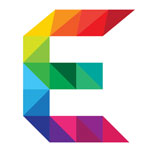
Electronic mail (email). Electronic text mail.
Emoji or Emoticon
Emojis and Emoticons are pictorial representations of faces used in text-based communication to express emotional response.
Emotional Intelligence (EI)
Emotional Intelligence (EI), also known as ‘EQ’ (to parallel IQ), describes a person’s ability to empathise, communicate and influence.
The skillset implied by EI is important to contact centre staff, both for customer service, to understand and resolve, and sales, where the emphasis is on persuasion.
Employee Empowerment
Employee Empowerment is a concept where staff members have a large amount of control over what they do, how they do it and when they do it.
In other words, an empowered employee is an employee who is given a large amount of autonomy.
Employee Engagement Survey
Employee Engagement Surveys are questions intended to gather detailed information about employees’ motivation at work. They also discuss the problems with ongoing engagement programmes and their overall impact on your team.
Employee Experience (EX)
Employee Experience (EX) refers to the art of measuring, improving, and optimizing the experiences your team members have every day.
Empathy
Empathy is the ability for an agent to put themselves into the customer’s shoes. Many call centres lack empathy.
The caller is just another caller, although the agent deals with the call as best as they can. With empathy, the agent feels the same concerns as the caller:
End of Service (EOS)
The term End of Service (EOS) is used to signify the official time that contact centres stop answering new contacts for the day.
Enterprise Resource Planning (ERP)
The means of determining staffing and occupancy levels for front- and back-office staff.
Erlang B
Developed by A K Erlang. Used to determine the number of trunks required to handle a known calling load during a one-hour period.
Erlang C
Erlang C is a formula used to estimate how many staff are needed in a call centre to handle incoming calls without making customers wait too long. It helps businesses plan staffing levels based on call volume and desired service levels.
Erlang Calculator
The Erlang Calculator is a tool that allows you to work out how many agents you will need.
You just need to enter your call volume and the service level that you would like to achieve.
The calculator then looks at the agent capacity you would need to achieve the service level.
Escalation Plan
A plan that specifies actions to be taken when the queue begins to build beyond acceptable levels.
Environmental Social and Governance (ESG)
Environmental Social and Governance (ESG) is a framework for contact centre leaders (and other business leaders) to manage risks and opportunities related to environmental, social, and governance criteria.
Early Warning System (EWS)
An EWS or Early Warning System is a process that alerts the company to new product issues that may arise. For example if there is a bug in a new product release then this will typically be picked up first in the contact centre.

Failure Demand
Failure Demand is the term used in call centres when contacts come in regarding a fault of the company within the customer journey.
Family Matters Leave of Absence (FMLA)
FMLA or Family Matters Leave of Absence refers to time off work due to unscheduled events such as a partner or a child being ill and having to rush off from work to look after them.
Fast Clear Down
A caller who hangs up immediately when they hear a delay announcement.
FCA Consumer Duty
In short, FCA Consumer Duty aims to enhance consumer protection as people buy and use financial products.
The new regulations are based on three core principles:
- Consumers should receive products and services that meet their needs and are marketed in a way that is clear, fair, and not misleading.
- Consumers should not face unreasonable barriers when they try to access financial products and services or exercise their rights.
- Consumers should receive products and services that are designed to meet their needs throughout their lifetime and are delivered fairly, taking account of their changing circumstances.
First Call (Contact) Resolution (FCR)
First Call Resolution (FCR) is a measure of relative success for an individual interaction. Usually defined in terms of a single customer or account, a single issue or order and a predefined time range for a response to have taken place and expressed as a percentage of the overall interaction volume.
Fixed Telecommunications Network
FTM stands for Fixed Telecommunications Network (i.e. a landline phone network that does not include mobile phones). Can also refer to Flight Tracking Number.
Flushing Out the Queue
Changing system thresholds so that calls waiting for an agent group are redirected to another group with a shorter queue or available agents.
Fundamental Skills Training (FST)
Fundamental Skills Training, or FST, is typically week one of an induction class when starting in a BPO or call centre. e.g. There was never a dull moment during our FST week.
Full Time Equivalent (FTE)
Full Time Equivalent (FTE) is used in call and contact centres to provide the equivalent headcount for one person working full time.

Gamification
Gamification is a method of turning everyday work or life into a game, to apply the excitement and rewards of gaming to common work tasks.
Generative AI
Generative AI is an umbrella term that refers to any of the AI models that generate a novel output based on an input, often called a prompt. This broader term encompasses models that produce language, visual imagery, and audio.
Good Will Gesture (GWG)
A Good Will Gesture (GWG) is a way of compensating a customer for a customer service problem.
Great Customer Service
Great Customer Service – Wikipedia defines customer service as “the provision of service to customers before, during and after a purchase”. In my dictionary, ‘Great’ is defined as “a quantity considerably above average”.
Grade of Service
The probability that a call will not be connected to a system because all trunks are busy. Grade of service is often expressed as “p.01” meaning 1% of calls will be “blocked”.
Sometimes, grade of service is used interchangeably with service level, but the two terms have different meanings.
Grave Yard (GY)
In a call centre GY stands for grave yard, and typically refers to a shift from midnight to 8am or 10pm – 6am. e.g. Tomorrow I will be working the GY shift.

Handled Calls
The number of calls received and handled by agents or peripheral equipment. Handled calls does not include calls that abandon or receive busy signals.
Handling Time
The time an agent spends in Talk Time and After-Call Work handling a transaction. Handling Time can also refer to the time it takes for a machine to process a transaction.
Hang Up the Phone
Hang up the phone means to end or disconnect a phone call.
Help Desk
A term that generally refers to a call centre set up to handle queries about product installation, usage or problems. The term is most often used in the context of computer software and hardware support centres.
Historical Reports
Reports that track call centre and agent performance over a period of time. Historical reports are generated by ACDs, third-party ACD software packages, and peripherals such as VRUs and Call Detail Recording Systems. The amount of history that a system can store varies by system.
Holding Time
See Average Holding Time on Trunks.
HOOP (Hours Of OPeration)
In a BPO, HOOP stands for Hours Of OPeration. Put simply this refers to the times and days the contact centre is open for business.
Staffing schedules must align with the HOOPS to ensure that the contact centre is adequately staffed during operational hours.
This means scheduling agents to work during peak hours and adjusting shifts based on the expected volume of customer interactions.
Hosted Call Recording
In its simplest terms, Hosted Call Recording is a service offered by a third-party provider that enables organisations without their own technical infrastructure to record calls on a contracted or per-usage basis using hardware and software maintained and updated by the host.
Hot Desk
The ‘Hot Desk’ model is a method of managing office resources in which workspaces are not allocated to specific members of staff. Rather than be assigned a desk which they use exclusively, staff members can use any available workstation.
‘HIG’ Chats
Weekly or monthly HIG “How’s It Going?” chats create opportunities to build trust and confidence with your team.
Hybrid Working
Hybrid working means that employees work both in the office and remotely (usually at home).
As this type of working becomes more commonplace acronyms for these types of workers are being created, and employees are being named after the days they spend in the office for example:
- MTFers (who go to the office on Monday, Tuesday, and Friday)
- WTFers (who go to the office on Wednesday, Thursday, and Friday
- MTWers (who go to the office on Monday, Tuesday, and Wednesday).

Intelligent Call Router (ICR)
The brand name for a specific intelligent telecommunications network service that takes real-time information from the ACD in the call centre to provide details on queuing and agent availability across a virtual call centre network.
IP Multimedia Subsystem (IMS)
IP Multimedia Subsystem (IMS) enables the convergence of data, speech and network technology over an IP-based infrastructure.
Immutable Law
A law of nature that is fundamental and not changeable (e.g. the law of gravity). In an inbound call centre, the fact that occupancy goes up when service level goes down is an immutable law.
Incoming Call Centre Management
The art of having the right number of skilled people and supporting resources in place at the right times to handle an accurately forecast workload, at service level and with quality.
Incremental Revenue (Value) Analysis
A methodology that estimates the value (cost and revenue) of adding or subtracting an agent.
Index Factor
In forecasting, a proportion used as a multiplier to adjust another number.
Interactive Voice Response (IVR)
Interactive Voice Response (IVR) is a computerised telephone system, commonly used when a customer rings a call centre. It allows the customer to interact with the company without the presence of an agent. It can be used for routing a call to the correct department, and also for speaking with a computer instead of an agent.
Interactive Voice Response (IVR) Survey
Interactive Voice Response (IVR) Surveys are automated phone surveys that allow customers to use their telephone keypads or voice to respond to survey questions.
Intelligent Network Service (INS)
Facilitates the distribution of calls to multiple destinations across a virtual call centre network.
Internal Help Desk
A group that supports other internal agent groups, e.g. for complex or escalated calls.
Internal Response Time
The time it takes an agent group that supports other internal groups (e.g. for complex or escalated tasks) to respond to transactions that do not have to be handled when they arrive (e.g. correspondence or email). See Response Time and Service Level.
Internet “Call Me” Transaction
A transaction that allows a user to request a callback from the call centre when exploring a web page. Requires interconnection of the ACD system and the internet by means of an Internet Gateway.
Internet “Call Through” Transaction
The ability for callers to click a button on a website and be directly connected to an agent while viewing the site. Standards and technologies that provide this capability are in development.
Internet Phone
Technology that enables users of the internet to place voice telephone calls through the internet, thus by-passing the long-distance network.
Intra Day Statistics
Reports that provide details of what is happening in the call centre at particular times of the day – often broken down into thirty-minute periods.
Intranet
An Intranet is a private network based on internet protocols, owned by an institution for the benefit of its members.
Invisible Queue
An Invisible Queue is a call centre queue where the caller is not made aware of how they are progressing – typically in a call centre.
Integrated Services Digital Network (ISDN)
Integrated Services Digital Network (ISDN) is a digital network providing 64kbit and 2 Mbit bandwidth voice and data circuits. A set of international standards for telephone transmission.
The two standard levels of ISDN are Basic Rate Interface (BRI) and Primary Rate Interface (PRI). See Basic Rate Interface and Primary Rate Interface.
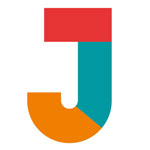
Job Offer (JO)
A Job Offer (JO) is a letter or email that you send out to a new employee offering them a new job with your company.
Judgemental Forecasting
Goes beyond purely statistical techniques and encompasses what people believe is going to happen. It is in the realm of intuition, interdepartmental committees, market research and executive opinion.
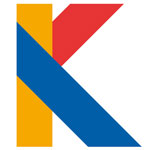
Key Performance Area (KPA)
KPAs is that they are the areas for development which our KPIs have alerted us to.
Key Performance Indicator (KPI)
Key performance indicators (KPIs) are also referred to as metrics.
Key performance indicators are measurements of various aspects of how businesses and processes perform. They fulfil two main objectives in the short and long term.
Key Performance Objective (KPO)
Your KPOs are your most important contact centre objectives. These are your targets, while your KPIs are your indicators.
As a note of caution, KPO can also stand for Knowledge Process Outsourcing – with the acronym changing from one organization to another.
Key Result Objective (KRO)
In BPO Agents are often set Job Objectives that have to be completed by the end of quarter. These objectives are known as KROs or Key Result Objectives and are linked to a Performance Review and possibly a bonus structure.
Knowledge Base
A knowledge Base is a collection of information that answers a range of common questions likely to be asked.
Knowledge Management System (KMS)
A desktop application that agents use as source of information to provide the answers to customer enquiries.
As the range of enquiries that an agent may have to handle is large, or the responses may change regularly, then the Knowledge Management System acts as a single source of content for the centre to use.

LAN (Local Area Network)
A network located in one building that links terminals, PCs and common equipment, e.g. printers, so that computers can share information and applications.
Law of Diminishing Returns
The declining marginal improvements in service level that can be attributed to each additional agent, as successive agents are added.
Learning Management System
A learning management system, also known as an LMS, is a system that contains training material and records training activity in a company
Legacy systems
In order for the agent to transact business with the customer they may have to use ‘old’ computer systems that the company has had for many years.
Typically these systems are not as user friendly as more modern ones as they may require the agent to remember codes, use lots of screens and do not have a logical flow.
Link Line (UK)
Non-geographic 0800, 0345, 0370 number charged at various rates, normally directed to a DDI number.
Load Balancing
Balancing traffic between two or more destinations.
Local Area Network (LAN)
The connection of multiple computers within a building, so that they can share information, applications and peripherals. See Wide Area Network.
Local Exchange Carrier (LEC)
Telephone companies responsible for providing local connections and services.
Logged On
A state in which agents have signed on to a system (made their presence known), but may or may not be ready to receive calls.
Long Call
For staffing calculations and traffic engineering purposes, calls that approach or exceed thirty minutes.
Longest Waiting Agent
A method of distributing calls to the agent who has been sitting idle the longest. With a queue, Longest Available Agent becomes next Available Agent.
Longest Delay (Oldest Call)
The longest time a caller has waited in queue before abandoning or reaching an agent.
Look Ahead Queuing
The ability for a system or network to examine a secondary queue and evaluate the conditions, before overflowing calls from the primary queue.
Look Back Queuing
The ability for a system or network to look back to the primary queue after the call has been overflowed to a secondary queue, and evaluate the conditions. If the congestion clears, the call can be sent back to the initial queue.
Lost Call
Lost Calls are any inbound calls that do not result in the caller being connected to either an advisor or an answering service.

Machine Customers
A Machine Customer is defined by a machine taking the place of an actual human customer to get something done. For example, AI-enabled digital assistants that complete the tasks a human asks of them.
Machine Learning
Machine Learning is the technical process that happens behind the scenes to help computers and algorithms learn.
Mailsort
UK-specific discount bulk mail service provided by the Royal Mail. Mailsort3 guarantees delivery within 10 working days, Mailsort2 within 3 working days and Mailsort1 on a given day.
Management Information System (MIS)
Management Information System (MIS) are reports that enable the Call Centre Manager to monitor the call centre’s performance through wallboards, real-time displays, reporting, forecasting and staff allocation.
MAN (Abbreviation for Manual)
In customer service, MAN often stands for Manual. This term is typically used to refer to processes, procedures, or instructions that are not automated and require manual intervention by customer service agents or support staff.
Manufacturer’s Serial Number (MSN)
In the business world, Manufacturer’s Serial Number (MSN) is an individual number – or sometimes a code – that is assigned to a unit.
Microlearning
Microlearning is the delivery of bite-sized learning modules delivered in the flow of work, enabling employees to complete each module in just a few minutes.
Middleware
Software that mediates between different types of hardware and software on a network, so that they can function together
Moment of Truth
A Moment of Truth in a call centre or customer service is a time when a customer forms a positive or negative perception of the company.
Monitoring
Also called Position Monitoring or Service Observing. The process of listening to agents’ telephone calls for the purpose of maintaining quality. Monitoring can be:
- Silent, where agents don’t know when they are being monitored
- Side by side, where the person monitoring sits next to the agent and observes calls
- Record and review, where calls are recorded and then later played back and assessed.
Multilingual Agents
Agents that are skilled in handling calls in more than one language.
Multi-Site Networking
Multi-Site Networking is the practice of rerouting calls to external locations based on the availability of resources. A lack of adequate handling capacity will trigger the redirection of calls to alternative destinations. This process is usually automatic and undertaken when a threshold has been reached for a metric such as Average Speed of Answer (ASA).
Multi-Skilling
An agent who can handle several different types of call, e.g. sales and service.
Mute
When an agent ‘Mutes’ a customer, they turn off the microphone or headset on their phone so the customer cannot hear them. They might choose to do this in order to ask a colleague for advice. It is also common to use mute as a courtesy when the agent needs to cough or sneeze.
Murphy’s Law
If anything can go wrong, it will. Not a good perspective to live by, but worth considering when designing agent groups, routing configurations and disaster-recovery plans.
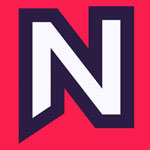
Natural Language Processing (NLP)
Natural language processing (NLP) is a subfield of AI and linguistics concerned with how computers process human language.
Nesting
In a call or contact centre, Nesting refers to the transition stage for new hires when they have completed their basic training and are starting to take some calls.
Net Promoter Score (NPS)
A Net Promoter Score (NPS) is one of several scoring methods companies use to measure the customer experience and gauge customer satisfaction. Specifically, NPS is a value or metric used to gauge how happy and loyal customers are to a brand or organization.
Network Control Centre
Also called Traffic Control Centre. In a networked call centre environment, where people and equipment monitor real-time conditions across sites, change routing thresholds as necessary, and coordinate events that will impact base staffing levels.
Network Inter-flow
A technology used in multi-site call centre environments to create a more efficient distribution of calls between sites.
Through integration of sites using network circuits (such as T1 circuits) and ACD software, calls routed to one site may be queued simultaneously for agent groups in remote sites. See Call Routing and Percent Allocation.
Next Available Agent
A call distribution method that sends calls to the next agent who becomes available. The method seeks to maintain an equal load across skill groups or services. When there is no queue, Next Available Agent reverts to Longest Waiting Agent.
Next Generation Workforce Optimisation (WFO)
The phrase “Next Generation Workforce Optimisation” (WFO) is generally accepted to have been coined by workforce management (WFM) software vendors looking for new terminology to describe their advanced product set.
Noise-Cancelling Headset
Headsets equipped with technology that reduces background noise
Non ACD In Calls
Inbound calls which are directed to an agent’s extension rather than to a general group. These may be personal calls or calls from customers who dial the agent’s extension number.
No Call No Show (NCNS)
No Call No Show (NCNS) is a common phrase for when someone misses work and doesn’t call to let their employers know.
Nuisance Call
A Nuisance Call is an unwelcome or unwanted call which bothers the recipient.

Occupancy
Occupancy is the percentage of time that advisors take on call-related activity compared to the logged-in time. ‘Call-related activity’ covers talk time, hold and after-call work (ACW).
Off The Shelf
Hardware or software programs that are commercially available and ready for use “as is”.
Offered Calls
All of the attempts callers make to reach the call centre. There are three possibilities for offered calls:
- They can get busy signals
- They can be answered by the system, but hang up before reaching a rep
- They can be answered by a rep
Offered call reports in ACDs usually refer only to the calls that the system receives.
Off-Peak
Periods of time other than the call centre’s busiest periods. Also a term to describe periods of time when long-distance carriers provide lower rates.
Omnichannel Customer Experience
An Omnichannel Customer Experience refers to a seamless and integrated approach to customer interactions across multiple channels and touchpoints.
It aims to provide a consistent and cohesive experience for customers, regardless of the channel or device they use to engage with your business.
Omnichannel CX Analytics
Omnichannel Customer Experience (CX) Analytics collects and analyses data from multiple channels, such as social media, call centre interactions, email, and more.
Onboarding
Call Centre Onboarding is about introducing a new hire to the company and their role. It’s a crucial period where you set expectations for the future, get the new employee up to speed, and deliver the training necessary for them to carry out their duties.
One and Done
The ability for the customer transaction to be completed by the agent in a single call.
This approach helps to improve First Contact Resolution (FCR) rates in contact centres.
Open Ticket
A customer contact (transaction) that has not yet been completed or resolved (closed).
Outbound
Outbound calls are those made by a contact centre to a third party, usually a customer or partner organisation.
Outbound Call Centre
An Outbound Call Centre is a a contact centre that males call to a third party, usually a customer or partner organisation.
Outbound Dialling Campaign
An Outbound Dialling Campaign involves tasking agents to place calls with the intention of making sales, generating leads, marketing a brand, or performing research.
Outsourcing
The sharing of call centre activities, e.g. peak call loads or certain call types, with a third-party specialist company who can manage the calls on your behalf.
Outsourcers can provide both inbound response and outbound campaign services across a range of call types – telemarketing, customer service, technical helpdesk, debt management and many more. This is also known as BPO – Business Process Outsourcing.
Overflow
Overflow occurs when unanswered calls are moved from one target group to another.
Overtime (OV)
In a BPO, Overtime (OV) refers to the additional hours worked by employees beyond their regular scheduled hours.
This is often necessary to manage increased workloads, meet client demands, or cover for absences. Employees working overtime are typically paid at a higher rate, in accordance with company policy or labour laws, to reflect the extra hours worked.

Pareto Chart
A bar chart that arranges events in order of frequency. Named after 19th-century economist Vilfredo Pareto.
Peaked Call Arrival
A surge of traffic beyond random variation. It is a spike within a short period of time.
Percent Allocation
A call routing strategy sometimes used in multi-site call centre environments. Calls received in the network are allocated across sites based on user-defined percentages. See Call Routing.
Phonetic Alphabet
The Phonetic Alphabet is a list of 26 words, each beginning with a different letter of the alphabet.
When spoken out loud, each word represents the letter that it begins with.
Poisson
Poisson is a formula sometimes used for calculating trunks – A variant of Poisson is used in the Erlang Formula.
Assumes that if callers get busy signals, they keep trying until they successfully get through. Since some callers won’t keep retrying. Poisson can overestimate trunks required. See Erlang B and Retrial Tables.
Pooling Principle
The Pooling Principle states: Any movement in the direction of consolidation of resources will result in improved traffic-carrying efficiency.
Conversely, any movement away from consolidation of resources will result in reduced traffic-carrying efficiency.
Post-Call Processing
See After-Call Work.
Positive Scripting
Positive Scripting is the process of designing a customer service script and formulating a message so as not to frustrate or upset your customers.
Predictive Dialler / Predictive Dialling
Predictive Dialler (or Predictive Dialling) is a tool used in call centres that automatically dials multiple phone numbers and connects answered calls to available agents. It predicts when agents will be free to take the next call, helping to maximize efficiency and reduce idle time.
Here an algorithm is used to predict when an agent is likely to become free and dials in anticipation of this so that the non-productive time that an agent spends between calls is minimised.
A predictive dialler can also be used in preview mode, where the systems allocates the contact to an agent for them to preview prior to physically dialling the number.
Preview Dialler / Preview Dialling
Preview Dialling automates call placing but only after agents have had time to gather and absorb information about the call recipient.
When an agent indicates availability, information about the next call is sent to the agent for preview. After a set amount of time the number is automatically dialled.
Probing Questions
Probing Questions are questions that you ask to gain greater insight into what someone has just told you, helping you to uncover the reasons and emotions behind what they have said.
Product Innovation
Product Innovation is a process for developing new products or improving on existing products in unique and useful ways. It’s essential for companies that want to maintain a competitive edge in the marketplace or expand and grow into new markets.
Product Specific Training (PST)
Product Specific Training (PST) is training that focuses on familiarizing customer service representatives with the intricacies of the specific products or services they support.
This training ensures that representatives have detailed knowledge about the product’s features, functions, and potential issues, enabling them to provide accurate and effective assistance to customers.
Problem Exists Between Keyboard And Chair (PEBKAC)
PEBKAC stands for Problem Exists Between Keyboard And Chair and is a humourous call reason code that defines a problem (often trivial) due to human error. E.g. a person disconnects a power cord and then phones technical support complaining that the system does not work. Also known as a PEBKAC Error.
Progressive Dialler / Progressive Dialling
Progressive Diallers are auto diallers that only dial a number when an agent is available to take the call.
Proof of Concept (POC)
Proof of Concept (POC) is a small project or trial used to test whether an idea or solution is feasible and works as intended.
It helps to demonstrate and validate that a concept or technology can achieve its goals before fully developing or investing in it.
Point Of Contact (POC)
In a contact centre, Point Of Contact (POC) can be used to refer to a customer touchpoint such as a phone call, email, live chat, engineer visit or entering a store.
Primary Rate Interface (PRI)
One of two levels of ISDN service. In North America, PRI typically provides 23 bearer channels for voice and data and one channel for signalling information (commonly expressed as 23B+D).
In Europe, PRI typically provides 30 bearer lines (30B+D). See Basic Rate Interface and Integrated Services Digital Network.
Private Automatic Branch Exchange (PABX)
See Private Branch Exchange (below).
Private Branch Exchange (PBX)
A telephone system located at a customer’s site that handles incoming and outgoing calls. ACD software can provide PBXs with ACD functionality. Also called private automatic branch exchange (PABX).
Private Network
A network made up of circuits for the exclusive use of an organisation or group of affiliated organisations.
Can be regional, national or international in scope and are common in large organisations.
Process
A system of causes.
Profit Centre
An accounting term that refers to a department or function in the organisation that does not generate profit.
Public Switched Telephone Network (PSTN)
The public telephone network which provides the capability of interconnecting any home or office with any other.
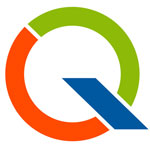
Quality of Experience (QoE)
Quality of Experience (often shortened to QoE or QoX) refers to the overall customer satisfaction with a company or service. QoE is similar to Quality of Service (QoS).
Quantitative Forecasting
Using statistical techniques to forecast future events. The major categories of quantitative forecasting include Time Series and Explanatory approaches.
Time Series techniques use past trends to forecast future events. Explanatory techniques attempt to reveal linkages between two or more variables. See Judgemental Forecasting.
Queue
The ability to prioritise and handle callers when there is no agent available.
Queue Time
See Delay.
Quiet Quitting
Quiet Quitting in short is someone who is almost checking out of the role before actually quitting.

RAG – Red, Amber, Green
This is typically used for quality scoring of phone calls. If a quality review (typically done by listening to calls) goes well then the call is scored as Green. If there are a few areas to improve on it will be Amber. If there are a number of more major problems it will be scored as Red.
A RAG system can also be used to flag if the customer was happy.
Random Call Arrival
The normal, random variation in how incoming calls arrive. See Peaked Call Arrival.
Rapport
Building Rapport with customers is all about creating a common bond of trust, particularly over the phone.
Readerboards
Also called display boards or wall displays. A visual display, usually mounted on the wall or ceiling, that provides real-time and historical information on queue conditions, agent status and call centre performance.
Real-Time Adherence Software
Software that tracks how closely agents conform to their schedules. See Adherence to Schedule.
Real-Time Data
Information on current conditions. Some “real-time” information is real time in the strictest sense (e.g. calls in queue and current longest wait).
Some real-time reports require some history (e.g. the last x calls or x minutes) in order to make a calculation (e.g. service level and average speed of answer).
Real Time Floor Monitoring (RTFM)
In a large call centre or in a BPO it is common to have a Real-Time Floor Monitoring (RTFM) role
The purpose of this is to monitor what is happening on the contact centre floor and adjust staffing levels and call queues accordingly.
Real-Time Management
Making adjustments to staffing and thresholds in the systems and network in response to current queue conditions.
Received Calls
A call detected and seized by a trunk. Received calls will either abandon or be answered by an agent.
Record and Review Monitoring
See Monitoring.
Recorded Announcement Route (RAN)
See Delay Announcement.
Re-engineering
A term popularised by management consultant Michael Hammer, which refers to radically redesigning processes to improve efficiency and service.
Remote Agents
A Remote Agent works from a location other than the traditional contact centre, which is usually their own home.
Response Time
The time it takes the call centre to respond to transactions that do not have to be handled when they arrive (e.g. correspondence or email). See Service Level.
Response Time When New (RTWN)
Response Time When New (RTWN) is a metric that some contact centres use to calculate the average time it takes to respond to a new customer.
Rest Day
In a call centre a rest day, also known as an RD, is a day off work.
Rest Day Overtime (RDOT)
Rest Day Overtime (RDOT) refers to the amount of overtime an employee works on a day that was originally scheduled to be a “rest day” or a day off.
Retrial Tables
Sometimes used to calculate trunks and other system resources required. They assume that some callers will make additional attempts to reach the call centre if they get a busy signal. See Erlang B and Poisson.
Retrial
A caller who “retries” when they get a busy signal.
Right Party Contact (RPC)
Right Party Contact (RPC) means successfully reaching the person you intended to contact, such as the correct decision-maker or target individual. It indicates that the call or message has connected with the right person for the intended purpose.
Right First Time (RFT)
Right First Time (RFT) is when a series of interactions leading to resolution occur without the need to repeat any of the steps in the process.
Each step was right the first time. This makes such a measure a gauge of accuracy for entire contact centre processes.
Rostered Staff Factor (RSF)
Alternatively called an Overlay, Shrink Factor or Shrinkage. RSF is a numerical factor that leads to the minimum staff needed on schedule over and above base staff required to achieve your service level and response time objectives.
RSF is calculated after base staffing is determined and before schedules are organised, and accounts for things like breaks, absenteeism and ongoing training.
Round Robin Distribution
A method of distributing calls to agents according to a predetermined list. See Next Available Agent and Longest Waiting Agent.
Real-Time Adherence (RTA)
In contact centres, adherence can be measured in both real time and historically.
RTA is the acronym used to signal when adherence is being measured in real time.
By measuring RTA, contact centres can address the issue immediately, in order to have the optimal number of advisors, at any given time.

Sales and Operations Planning (S&OP)
Sales and Operation Planning (S&OP) is the name of the planning process that focuses on the tactical goals of the company.
Software as a Service (SaaS)
The (remote) delivery of an item of software or a system by a provider to a subscriber or user base.
Satellite Call Centre
A satellite call centre is not up in space. It is a smaller contact centre at another location – perhaps across the other side of town.
It typically comes about when a company outgrows its main building in the town centre and needs to expand. Instead of moving everyone out of the old building, it acquires a new building out of town.
The two call centres are joined together, so they typically take the same calls, but are physically in tow different locations.
Scatter Diagram
A chart that graphically depicts the relationship between two variables.
Schedule Compliance
Scheduling Exception
When an agent is involved in an activity outside of the normal, planned schedule.
Screen Monitoring
A system capability that enables a supervisor or manager to remotely monitor the activity on agents’ computer terminals.
Screen Pop
Screen pop describes the ability for a screen to arrive on an agent desktop at the same time as a call. A CTI capability.
Callers’ records are automatically retrieved (based on ANI or digits entered into the VRU) and delivered to agents, along with the calls.
Script
A Script is a written guide produced for agents to assist them with call handling.
Self-Service
If you can provide self-service, you are providing customers with a way of completing a transaction/having their query answered without having to involve a member of the customer service team.
Service Level Agreement (SLA)
A Service Level Agreement (SLA) is a contract between a service provider and a customer that defines the quality and performance standards the provider must meet.
It includes details like response times, service availability, and other expectations to ensure the service meets agreed-upon standards.
Service Recovery
Service Recovery is a general term that refers to how well a company is able to solve the problem of a dissatisfied customer through good customer service.
Session Initiated Protocol (SIP)
Session Initiated Protocol (SIP) is a signalling system that enables a whole range of applications to be integrated. This includes voice, data, video, pictures and online games.
It allows the user to be able to switch between one mode and another. A good example would be online gaming through a mobile phone, where while playing you would be able to use a “push to talk” button.
Shift Inflex (or Schedule Inflex)
Shift inflex (or schedule inflex) is a fudge factor to cover for things like adherence and shrinkage. The word Inflex is a shortening of Inflexibility.
It is a factor (typically 5% – 10%) that is added to the FTE number to allow staffing to meet service levels.
Shrinkage
Shrinkage is a measurement of anything that takes an agent away from their ability to take customer contacts.
Side-by-Side (SBS) Coaching
Side-By-Side (SBS) is a type of coaching where one employee sits alongside another employee listening in on the call.
Silo
Operational Silos describe any processes, business units, management style or group of employees that don’t interact with other processes, systems or employees.
Skills-Based Routing
Skill Based Routing ensures that calls are directed to those agents that have the specific skills to answer that call type most effectively.
Skip Level Meetings
A skip level meeting is a meeting between agents and managers, where the team leader is not present – allowing managers to have a transparent view of what is going-on on the contact centre floor.
Small Medium Enterprise (SME)
An SME is an enterprise or business with fewer than 250 employees.
While this is how it is defined in the UK, in the EU, a business can also be an SME if it has an annual turnover of less than €50 million, or a balance sheet total of less than €43 million.
Smooth Call Arrival
Calls that arrive evenly across a period of time. Virtually non-existent in incoming environments.
Social Customer Service
Social Customer Service is the practice of extending a business’s existing service platform to include social media channels.
Soft Skills
Soft Skills refer to a set of personal attributes, social cues, communication abilities, and personality traits that are essential for success in any job or profession.
Special Response Team (SRT)
A SRT is a group of engineers that can be called out for an emergency.
However, SRT can also be used as a short-term for a second line group in a contact centre that deal with special situations (e.g. VIP Escalations, Premium Customers etc.).
Speech Analytics (SA)
At its core, Speech Analytics is a tool that automates the process of listening to customer interactions.
Speech Recognition
The capability of a voice processing system to decipher spoken words and phrases.
Spike
The term ‘Spike’ refers to a sudden and dramatic increase in inbound contact volume. It’s often understood to be a short-term event, taking place over a few hours, although spikes can continue over longer periods.
Standard Operating Procedure (SOP)
SOPs are a set of guidelines that contact centres create to deal with common processes and procedures, such as:
- How calls are scored for quality
- How to deal with complaints
- How to schedule staff
Within WFM, SOPs are created to provide a process to follow when the contact centre experiences a significant peak or trough in contact volumes.
Stuck Call
A stuck call is technical problem where a call appears to be stuck in the telephone system. Typically the caller has ended the call but for some reason the disconnect message has not reached the system and ended the call. It looks as though the call is still in progress.
This could either show up as a call that has been queueing for a long period of time or an ongoing call that has been in progress for a long time. Stuck calls usually need to be cleared manually.
Supervisor
The person who has front-line responsibility for a group of agents. Typical ratios are one supervisor to every 10-15 agents.
However, help desks can have one supervisor for every five people, and some reservations centres have one supervisor for every 30 or 40 agents.
Generally, supervisors are equipped with special telephones and computer terminals that enable them to monitor agent activities. Also known as Team Leader or Team Manager.
Supervisor Call (SUPCALL)
SUP Call (or SUPCALL) stands for Supervisor Call, and happens when a customer is not happy and asks to be put through to a supervisor.
This typically happens when the customer believes that their issue requires additional attention or cannot be resolved at the current level.
For example, a customer might express their frustration by saying, ‘I’d like to speak to a manager.‘ This type of call is also known as an Escalation Call, as it involves escalating the issue to a supervisor or manager who has more authority to address complex or unresolved problems
Supply Chain Management
In a BPO SCM stands for Supply Chain Management and it typically means moving manufacturing or other activities to an external company or other activities as well as Customer Service, such as Manufacturing, Billing and Logistics.
Synchronous Messaging
Synchronous Messaging is a live person-to-person conversation like the typical live chat option in call centres. Typically, synchronous conversations are where the conversation is going both ways at all times.

T1 Circuit
A high-speed digital circuit used for voice, data or video, with a bandwidth of 1.544 megabits per second. T1 circuits offer the equivalent of twenty-four (24) analogue voice trunks.
Talk Time
The amount of time an agent spends handling a customer call – from start to finish.
Tardy
Tardy or Tardiness is someone arriving late for work or coming back late from their break. This will be included in the agent schedule adherence.
Team Leader (TL)
The term Team Leader (TL) is another word for team manager or supervisor. In some businesses a team leader is also known as a Team Captain (TC).
Telecommuting
Using telecommunications to work form home or other locations instead of at the organisation’s premises.
Telephone Service Factor
See Service Level.
Telephone Service Representative (TSR)
A TSR is another name for a Customer Service Rep (CSR), with one slight difference. A TSR will only handle telephone calls, while a CSR may also handle emails, chats, letters etc.
Telephony Applications Programming Interface (TAPI)
CTI protocol developed by Microsoft and Intel.
Telephony Services Application Programming Interface (TSAPI)
CTI protocol developed by Novell and AT&T.
TeleSet
The telephone set used by an agent in a call centre. It often has other functions (the ability to log on etc.) to a normal telephone set.
The term TeleSet was first termed by Aspect but has more recently come to be used as any agent telephone set.
Temporary Lay Off (TLO)
A Temporary Lay Off, or TLO, occurs when a company may not need so many workers during a quite phase so may lay off the employees on a temporary basis.
Text Analytics
Text Analytics is a computational field that draws heavily from the machine learning and statistical modelling niches, as well as the linguistics space.
In this space, computers are used to analyse text in a way that is similar to a human’s reading comprehension.
Tone Of Voice (TOV)
Tone of Voice refers to the way someone speaks and is made up of several factors, including pace and pitch – all of which play a part in determining how a message is conveyed.
Top Level Organisation (TLO)
When a company buys another company, but don’t merge, the buying company is known as the TLO.
A TLO is more commonly known as a “Parent Company”.
Toll-Free Service
Enables callers to reach a call centre out of the local calling area without incurring charges. 0800 and 800 service is toll-free. In some countries, there are also other variations of toll-free service.
For example, with 0345 services in the United Kingdom, callers are charged local rates and the call centre pays for the long-distance charges. See also Link Line.
Total Cost of Ownership (TCO)
Total Cost of Ownership (TCO) is the complete amount of money needed to buy, use, and maintain something over its entire life.
This includes not just the initial purchase price but also ongoing costs like maintenance, repairs, and upgrades.
Total Experience (TX)
Total Experience (TX) is a holistic approach to delivering exceptional experiences that encompasses all aspects of the customer journey.
It includes customer experience (CX), employee experience (EX), user experience (UX), and multi-experience (MX).
Traffic Control Centre
Transmission Control Protocol/Internet Protocol (TCP/IP)
The protocols that govern the exchange of sequential data. TCP/IP was designed by the US Department of Defense to link dissimilar computers across many kinds of networks. It has since become a common standard for commercial equipment and applications.
True Calls Per Hour
Actual calls an individual or group handled divided by occupancy for that period of time.
Trunk, Trunks
Not the storage area of a car, but a word to describe the telephone lines coming into a call centre.
The word “trunk” could easily and less confusingly be replaced by the word “telephone line”.
Turnaround Time (TAT)
Turnaround Time (TAT) in a contact centre or BPO is the total time that it takes from when a customer raises a problem to the time that the problem is marked as solved.
Turret
This is one of the most baffling uses of jargon in a call centre, but effectively means an agent telephone set.
This term was commonly used in the 1980s and 1990s but is not so widespread today. Usually the term TeleSet is used these days.

(The) UK Do Not Call List
In the UK, the definition of a “Do Not Call” list comprises 2 key categories:
- Individuals registered with the Telephone Preference Service (TPS)
- Individuals who ask to be removed from your data list after the first point of contact
Companies need to respect the wishes of the individuals in both of these categories to avoid being fined.
Unavailable Work State
An agent work state used to identify a mode not associated with handling telephone calls.
Unified Communications (UC)
Unified Communications (UC) refers to the blending of interaction types. For example, where initial contact was made by voice, the response may be via email, etc.
Unified Communications as a Service (UCaaS)
UCaaS stands for Unified Communications as a Service.
UCaaS consolidates a company’s enterprise communications applications (including voice, video, messaging, and conferencing) into a single cloud-based platform.
Unified Desktop
A desktop application which amalgamates other systems or interfaces and accepts both voice and electronic interactions.
A Unified Desktop may also populate an underlying (CRM) system with interaction or customer data, in real time.
Unified Customer Experience
Unified Customer Experience means providing a consistent and seamless service across all channels and touchpoints. Whether a customer interacts through phone, email, or chat, the experience is integrated and smooth, making it easier for them to get support and information.
Uniform Call Distributor (UCD)
A simple system that distributes calls to a group of agents and provides some reports. A UCD is not as sophisticated as an ACD.
Universal Agent
Refers to either:
- An agent who can handle all types of incoming calls
- An agent who can handle both inbound and outbound calls.
Unscheduled Personal Leave (UPL)
Unscheduled Personal Leave (UPL) is a type of leave that is provided to deal with personal or family emergency situations. It is also known as compassionate leave. It may be either paid or unpaid.
Utilization
Utilization (also spelt as “utilisation”) is the percentage of time that an advisor is either assisting or available to assist with customer activity out of the time that they are paid to be in the contact centre.
Unable to Test (UTT)
Unable to Test (UTT) in customer service means that an issue or functionality cannot be verified or tested due to constraints like lack of access, incomplete information, or system unavailability.
For example, a customer reports a software bug, but the support agent cannot test it because the required server is down for maintenance.
Utterance (UTT)
In speech analytics, UTT refers to Utterance which can be a question, statement, greeting, or closing phrase that is used to communicate with customers. Utterances are typically bounded by silence.

Verbatim Feedback
Verbatim feedback is also known as open feedback and involves capturing customer comments, not scores.
Virtual Agent
A Virtual Agent is an AI-powered customer assistant which is able to autonomously solve customer issues through a conversational experience.
Virtual Call Centre
A group of call centres that acts as a single point for call handling and reporting processes.
Virtualisation
The means by which a series of disparate processes or systems is combined to provide a single service offering.
Virtual Recruitment Hub (VRH)
VRH stands for Virtual Recruitment Hub which typically refers to a software platform that allows you to share CVs within an organisation and manage candidates.
Visible Queue
When callers know how long the queue that they just entered is, and how fast it is moving (e.g. they hear a system announcement that relays the expected wait time). See Invisible Queue.
Voice and Non-Voice Process
Voice Based BPO Processes require speaking directly to customers, for example on the phone, which could be a job in the form of a sales or support.
Non-voice based BPO Processes are typically jobs that do not require direct interaction or voice but rather leading with knowledge
Voice Design
Voice Design is both an art and a science. It’s more than just writing a script to take the user from point A to point B and collect some information along the way.
The designer needs to bridge the gap between technical functionality – the needs of the machine – while also accounting for the sometimes unpredictable behaviour of the human users – the needs of the humans.
Voice over Internet Protocol (VoIP)
Voice over Internet Protocol (VoIP) is the means by which a voice channel is delivered as packets through internet protocols, using a pre-existing streaming (CODEC) format, such as H.225, H.323 (see also SIP).
Voice over IP (VoIP)
Refers to a host of methods used to encode voice and transmit it over an IP network, such as an internal ethernet or over the internet.
Voice Processing
A blanket term that refers to any combination of voice-processing technologies, including Voice Mail, Automated Attendant, Audiotex, Voice Response Unit (VRU) and Faxback.
Voice Response Unit (VRU)
Also called Interactive Voice Response Unit (IVR) or Audio Response Unit (ARU).
A VRU responds to caller-entered digits or speech recognition in much the same way that a conventional computer responds to keystrokes or clicks of a mouse.
When the VRU is integrated with database computers, callers can interact with databases to check current information (e.g. account balances) and complete transactions (e.g. make transfers between accounts). See Voice Processing (above).
Voicebot
A voicebot is the same as a chatbot, but it is instead voice-activated.

Wallboards
Electronic displays within the physical location of a call centre, used to give the management and agents a view of their own team’s performance.
Wallboards can be used to display key performance criteria such as service level or calls queuing, again in real time.
There is a lot of debate in the industry about whether wallboards are good or bad for agent morale.
Waterfall Schedule
A Waterfall Schedule is a type of schedule where the number of hours per day reduces as the contact volume reduces across the week. For example Monday 10 hours. Tuesday 9 hours. Wednesday 8 hours. Thursday 7 hours. Friday 6 hours.
Web User Interface (UI)
A Web User Interface (web UI) provides access to your business software from any internet-connected device (laptop, tablet or even smartphone).
Wide Area Network (WAN)
An intra-office data network used to connect terminals, computers and equipment across multiple sites.
Work at Home (WAH)
Work at Home (WaH) is popular for both contact centres and BPO as a way of increasing flexibility. WaH means doing your job from your own home rather than going to an office or workplace.
It allows employees to perform their tasks remotely using technology to stay connected with their team and complete their work.
Workforce Engagement Management (WEM)
Workforce Engagement Management (WEM) is the management approach that deals with contact centre employee performance. WEM encompasses the entire lifecycle of contact centre employees
Workforce Management (WFM)
Workforce Management (WFM) is the means of determining and providing schedules, forecasting and adherence for a workforce against historical interaction volumes and known future events.
Workforce Management (WFM) Software
Software systems that, depending on available modules, forecast call load, calculate staff requirements, organise schedules and track real-time performance of individuals and groups.
Workforce Optimisation (WFO)
Workforce Optimisation (WFO) means of applying schedules and forecasts based on previous and known future interaction and workflow volumes.
Wrap-Up Codes
Also known as ‘disposition codes’ or ‘call codes’, Wrap-Up Codes are a quick way to summarise important information about an interaction.
Wrap-Up Time (or Wrap Time)
Wrap-Up Time, or Wrap Time, is the time spent by an agent doing After-Call Work (ACW) once they have concluded an interaction.
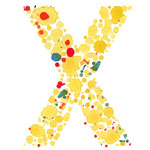
We currently have no definitions beginning with the letter “X”.
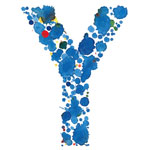
We currently have no definitions beginning with the letter “Y”.

Zero Tolerance Policy (ZTP)
ZTP is a ban of a certain behaviour or possession that an organization deems to be unacceptable.
It can also be thought of as a code of conduct – which, if an employee doesn’t follow, will lead to some some sort of repercussion.
Zip Tone
See Beep Tone.
Additional Definitions
3-2-1 (Idea Generation Technique)
Used to gather information from several people in a short space of time. Focused on identifying immediate solutions to a specific issue.
360-Degree View of the Customer
A 360 Degree View of the Customer means creating as complete as possible an understanding of a customer from all available data sources. This includes information the customer volunteers, and what can be collected from other sources. This information is then combined into one screen or into a few related screens and is often called a single view of the customer.
Further reading
- Outbound Dialling Reference Guide
- An A-Z of Speech Analytics Features
- A-Z of call recording features
- Call Recording and Speech Analytics Reference Guide
Contributors
- Tony Tillyer of Datapoint, who contributed a big batch of additional material.
- Jonty Pearce of Call Centre magazine Call Centre Helper
- Paul Weald of mcx
- Richard Snow of Ventana Research
If we are missing any other terminologies please drop us a line.
Author: Jonty Pearce
Reviewed by: Megan Jones
Published On: 18th Jun 2018 - Last modified: 15th Aug 2025
Read more about - Definitions, Terminology








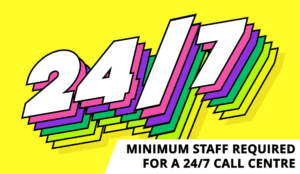


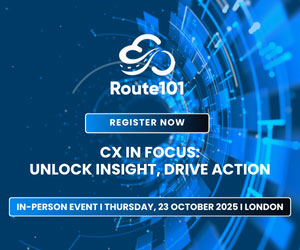









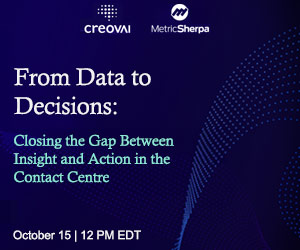








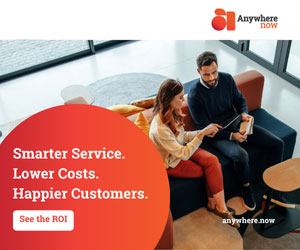






I am currently working in BPO but I am not familiar with those other terms mentioned above. Haha.
Thanks for this blog! It’s very informative and helpful as well. 😀
Started my new job and needed to get my head around all these “buzz” words. Thanks for the easy definitions
I am currently working in bpo but I am not familiar with those thanks for this
Great glossary. Thanks.